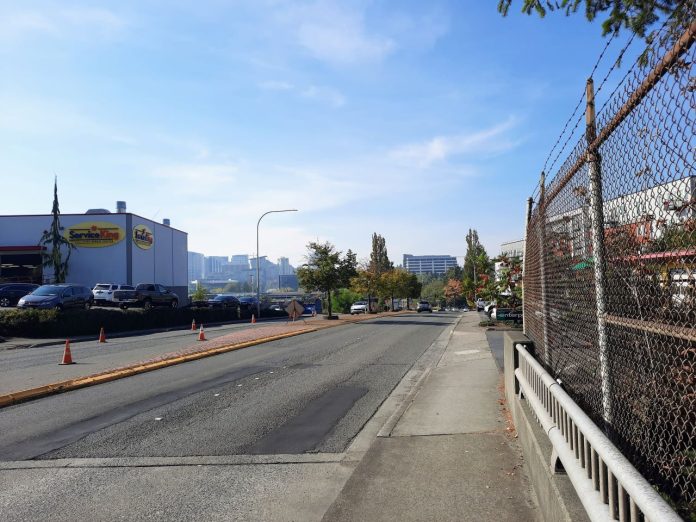
Those hoping for safe biking facilities on one of Bellevue’s most dangerous streets faced a major setback last week, after the Bellevue Transportation Commission voted against further study of changes to Bel-Red Road. The five lanes of NE Bel-Red Road offer a direct connection between Bellevue’s fast-growing Spring District and BelRed neighborhoods and booming Overlake in Redmond. However, the corridor has long been an unavoidable obstacle to multimodal travel in the city, with narrow sidewalks, fast moving traffic, and no room for people on bikes.
Despite the fact that people biking, rolling, and walking are trying to safely navigate Bel-Red every day, numerous commissioners cited safety concerns as a reason to keep the street exactly as it is today.
The corridor had been included in the ambitious Bike Bellevue plan, a set of network upgrades that was significantly gutted by the Bellevue City Council earlier this year. The original plan for Bel-Red had been the repurposing of a westbound lane, leaving two eastbound lanes and a center turn lane. Initial data from last year’s Bike Bellevue design guide showed minimal impacts to vehicle travel times from the change, and a coalition of safe streets advocates backed the plan.
Nonetheless, the idea of converting existing traffic lanes to bike lanes brought out significant opposition from neighborhood and business interest groups, and the City has largely caved to that pressure. Bellevue transportation director Andrew Singelakis removed Bike Bellevue’s project lead from his post after an opponent filed an ethics complaint that was later thrown out.
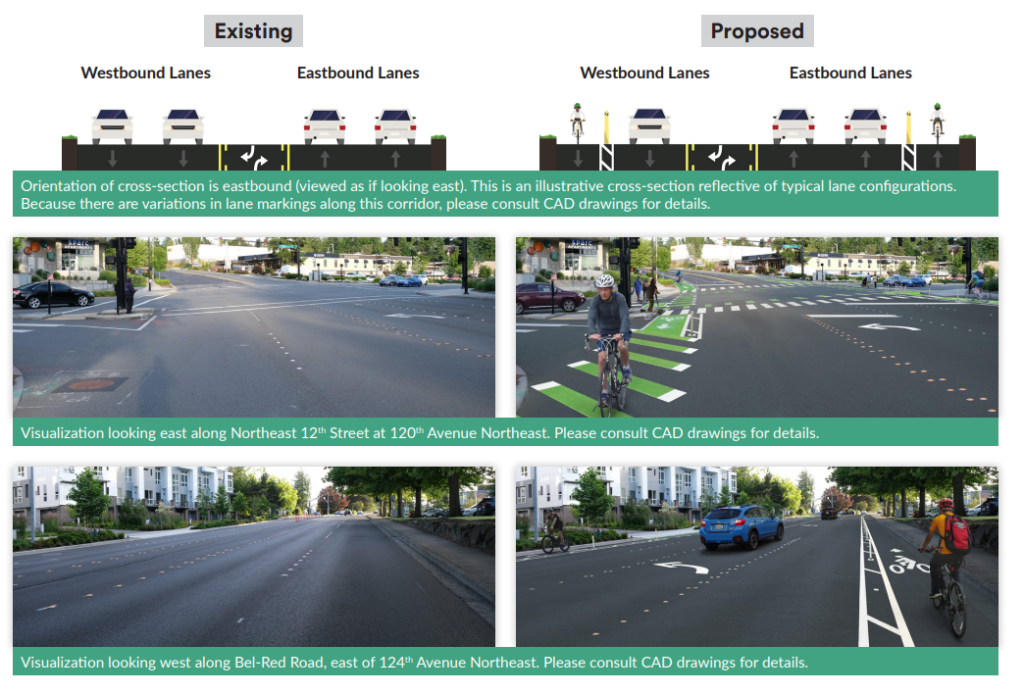
Following direction from the Bellevue City Council that repurposing vehicle lanes only be considered as a “last resort,” the transportation commission has been going down the list of the 11 Bike Bellevue corridors, mostly siding with recommendations from City staff to move forward with options that don’t involve any reduced traffic capacity. In taking this timid approach, they’ve been largely centering motorist speed over potential safety benefits that could come from rechanneling streets.
On Thursday, the commission broached Bel-Red Road, a street so significant and central to the Bike Bellevue plan that it was broken up into three separate projects. Rather than simply tabling the idea, they voted to go even further, taking the street off the list of streets to be considered for upgrades entirely. The recommendation from staff had been to study potential changes to Bel-Red as part of the city’s Transportation Facilities Plan, which would likely delay a decision by several years but technically keep the project alive.
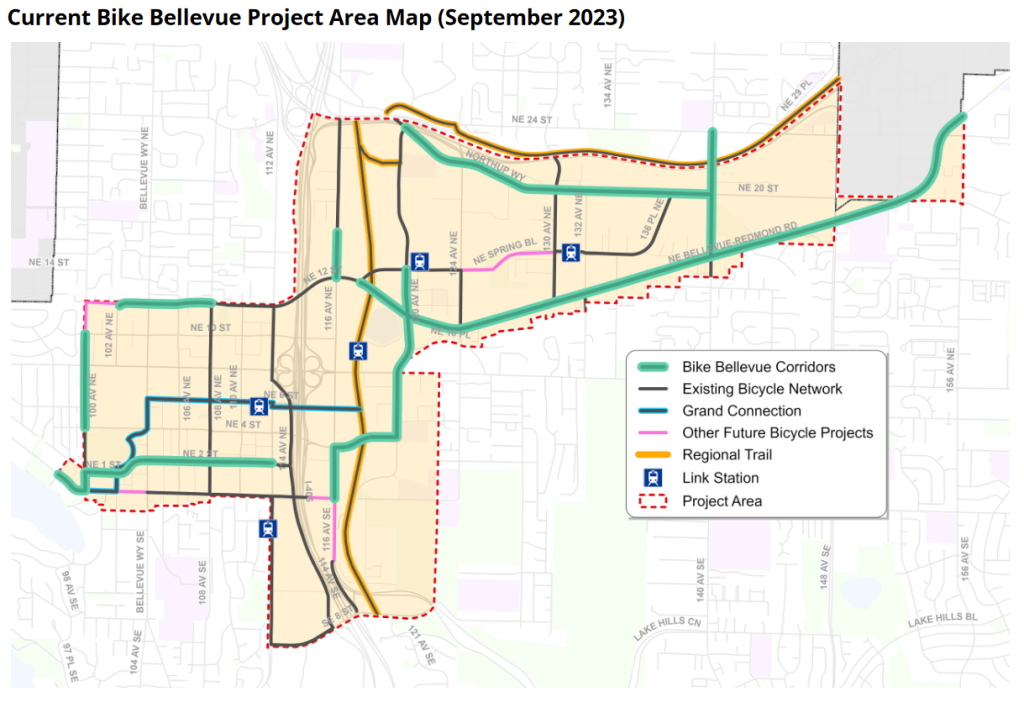
Ahead of the 3-2 vote, Commissioner Loreana Marciante, who voted no along with Jonathan Kurz, spelled out how significant the decision made Thursday was.
“If this is the way you’re gonna go, you’re essentially disregarding everyone that has ever come to this commission, to state how important it is to them, to bike on Bel-Red,” Marciante said. “You’re telling them that you are not even willing to study providing a more safe route, that there are people that use that route today, but you are not willing to study the idea of a safe route — or an alternate safe route that would function the same as Bel-Red, which would all be part of the study.”
With this decision, the commission did exactly what was requested of it by business groups, including Kemper Development and Wallace Properties. For months, the same groups have been arguing that a brand new street that Bellevue is planning, the final segment of Spring Boulevard, is a reasonable substitute for Bel-Red Road, overlooking the fact that it likely won’t be complete until sometime in the 2030s, and doesn’t extend as far east as Bel-Red Road. Bel-Red is a direct connection to Redmond that Spring Boulevard will never be.
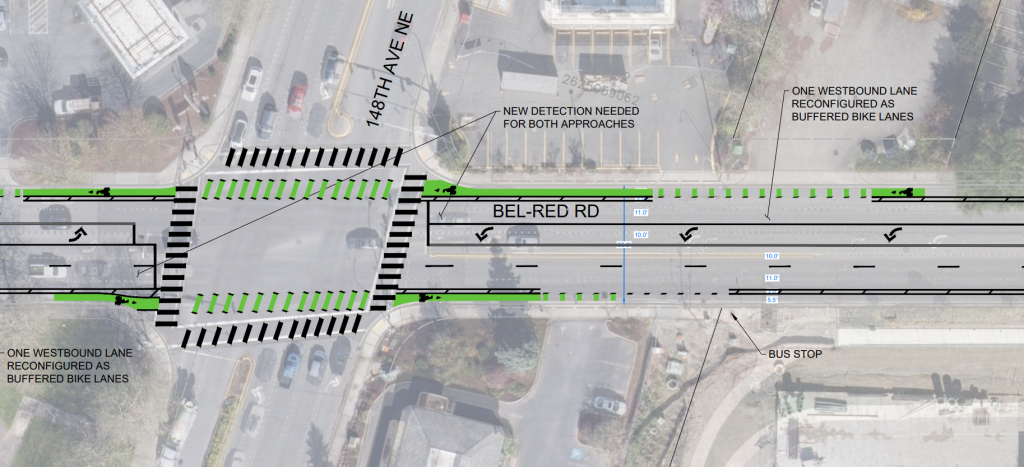
“Bike lanes on Bel-Red will worsen traffic congestion, will create multiple conflict points along driveways and are redundant to Spring Boulevard,” Mariya Frost, Kemper Development’s director of transportation, told the commission ahead of the vote Thursday. “Bel-Red is a critical arterial that should be preserved to accommodate growth and to keep residents and workers who depend on a car for mobility moving.”
But along with the idea that bike lanes on Bel-Red would be bad for traffic, several commissioners tried to argue that they would be taking Bellevue in the wrong direction on safety, and that Bel-Red would never be safe enough to support biking and rolling.
“I’m not convinced that trying to get more people to get on a really busy arterial is a good idea,” Commissioner Albert Ting said. It was Ting who ultimately made the motion to take bike lanes off the table for Bel-Red. “We have the majority of accidents [on Bel-Red] being from right and left hand turns. So I think we have to think really, really hard about where we want those facilities to go, and what we want facilities to be.”
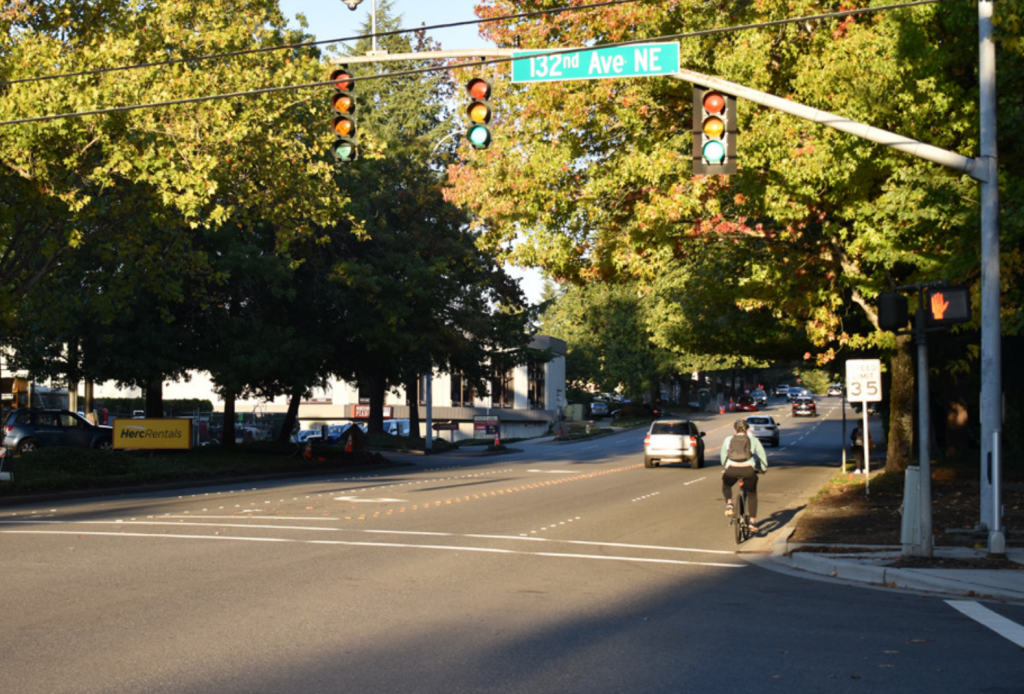
Other commissioners suggested that people biking on Bel-Red should be satisfied with using other streets, disregarding that many amenities and destinations are located on Bel-Red.
“Basically hearing the way you talk about Bel-Red road, it makes me think of Bellevue Way. And Bellevue Way is not a place for cyclists,” Commission Vice Chair Drew Magill said, before voting yes. “And it’s not designed for that. And I kind of see Bel-Red Road, it’s the same way. Bel-Red Road is built out, it’s a huge spine for cars going from the east-west. And we can study that, I don’t know how you’re going to do it without repurposing a a travel lane. But also, we have corridors that are right next to it: you have Spring Boulevard, you have Northrup [Way] and then the 520 trail, so you have options, right?”
Not discussed by the commission was the role that changes to Bel-Red Road could play in reducing vehicle speeds and decreasing crash severity for users of all modes along the corridor. A study conducted by researchers at Rutgers University New Brunswick and published earlier this year looked at driver behavior before and after a corridor with a bike lane present and found an overall reduction in speeds for turning drivers: a 21% decrease in average speeds for right-turning drivers, a 28% decrease in average maximum speeds, and an 8% decrease in speeds for drivers who weren’t even turning across a bike lane.
During a time when an array of advocacy organizations on the Eastside are trying to get Bike Bellevue back on track and increase overall funding to Vision Zero programs within Bellevue, the transportation commission’s vote last week represented a big setback and illustrated the way that major car-dominated corridors like Bel-Red Road are still seen as sacrosanct within Bellevue.
Ryan Packer has been writing for The Urbanist since 2015, and currently reports full-time as Contributing Editor. Their beats are transportation, land use, public space, traffic safety, and obscure community meetings. Packer has also reported for other regional outlets including BikePortland, Seattle Met, and PubliCola. They live in the Capitol Hill neighborhood of Seattle.

